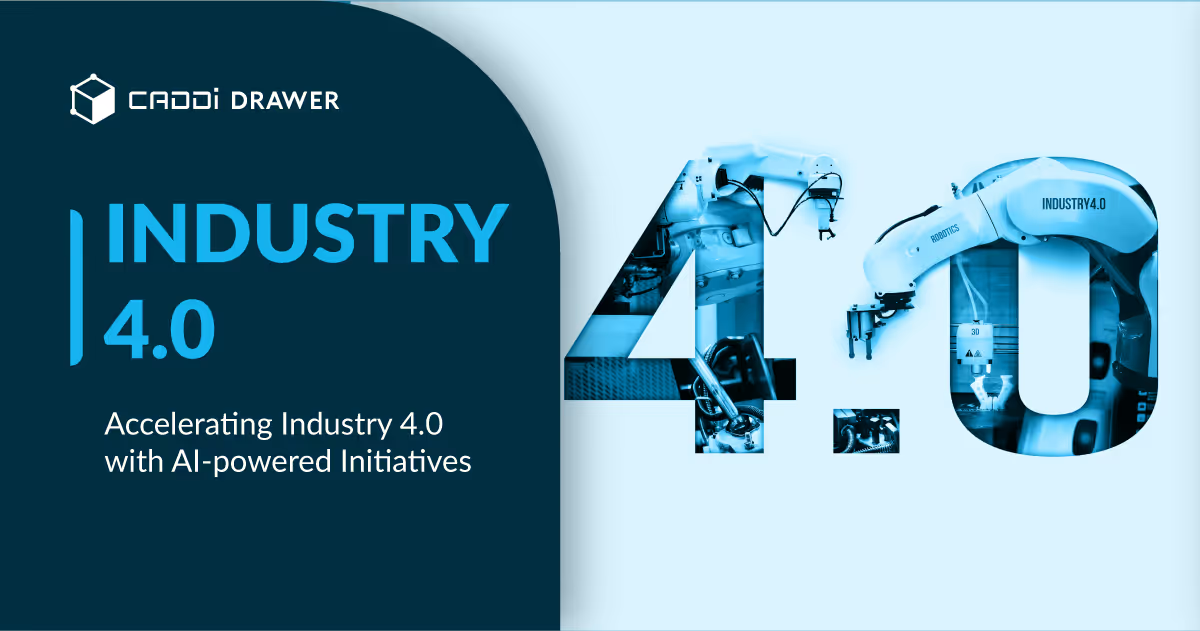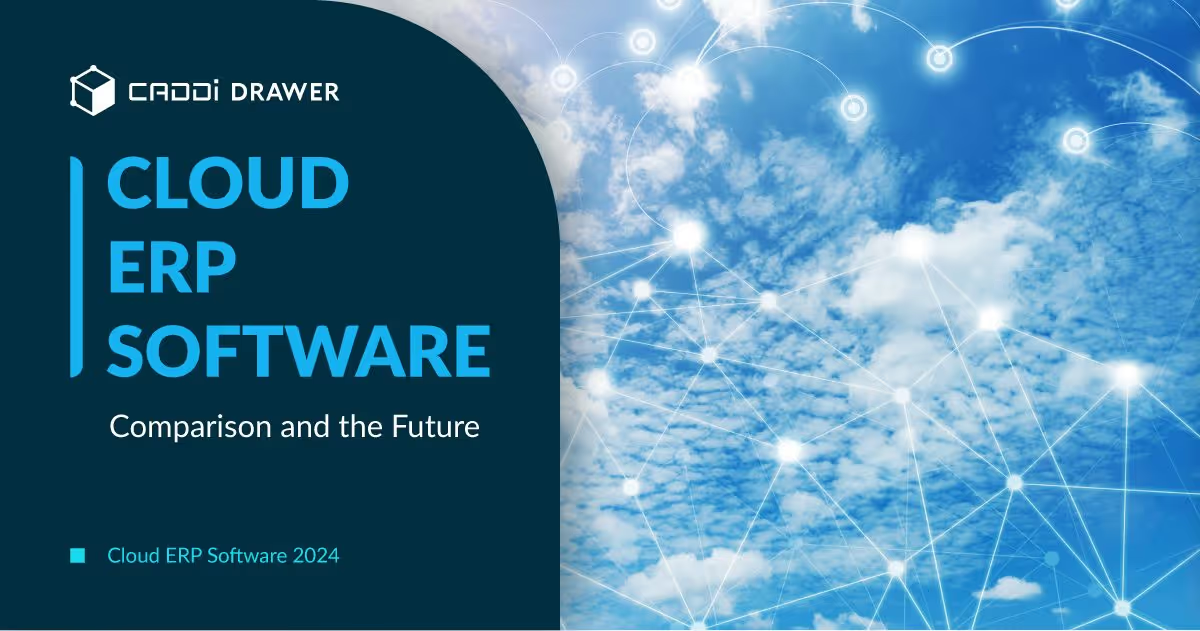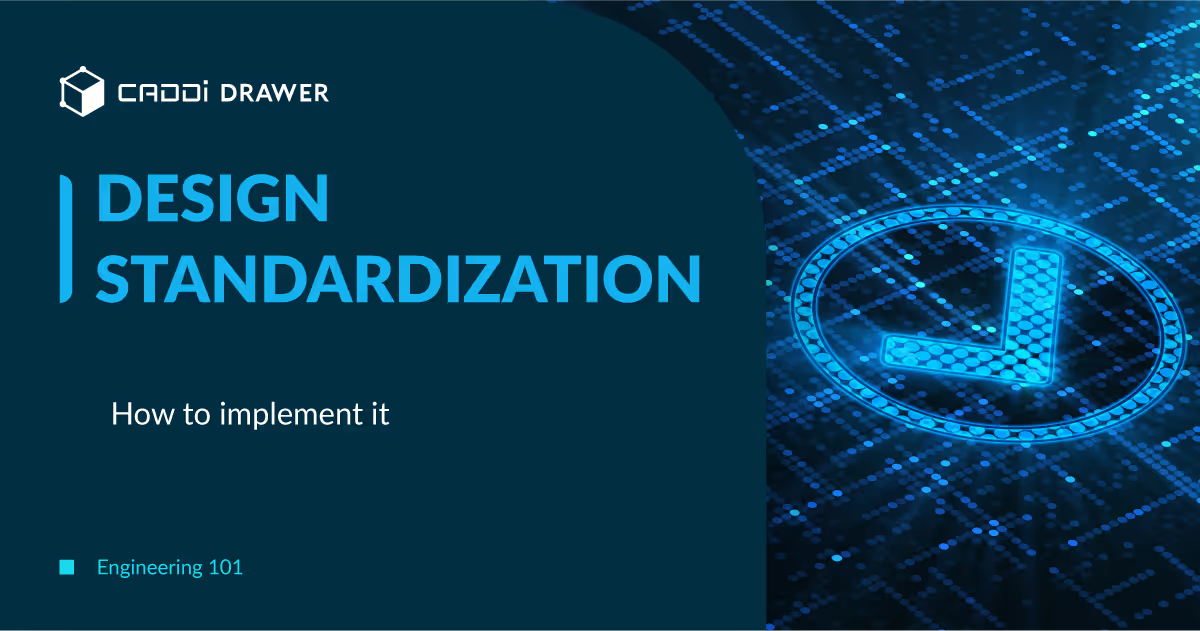Accelerating Industry 4.0 with AI-powered Initiatives

Table of Contents

What is Industry 4.0?
Industry 4.0, often referred to as the Fourth Industrial Revolution, was a term coined by the German government in 2011. It represents a paradigm shift in manufacturing, leveraging advanced digital technologies to create interconnected, automated, and data-driven production systems. To understand the significance of Industry 4.0, let’s take a brief journey through the previous industrial revolutions.
Now, Industry 4.0 builds upon these foundations, integrating cutting-edge technologies such as the IoT, AI, robotics, and cloud computing. The goal is to create smart factories where machines, products, and processes are interconnected, enabling real-time data exchange, autonomous decision-making, and flexible manufacturing.
At its core, Industry 4.0 is guided by four key principles:
- Interoperability: Machines, devices, sensors, and people seamlessly communicate and collaborate.
- Information transparency: The vast amount of data generated is collected, analyzed, and visualized to provide actionable insights.
- Technical assistance: Automated systems support humans in decision-making and physically demanding or hazardous tasks.
- Decentralized decisions: Cyber-physical systems make autonomous decisions based on real-time data.
The potential benefits of Industry 4.0 are immense. It promises increased efficiency, productivity, and agility in manufacturing processes. Predictive maintenance, enabled by IoT sensors and AI algorithms, can minimize downtime and optimize asset performance. Customized mass production becomes feasible, allowing manufacturers to meet diverse customer demands without sacrificing efficiency.
The evolution of Industry 4.0 is not just about technological advancements; it’s about reimagining the way we manufacture, interact with machines, and create value. As we embrace this new era of intelligent manufacturing, the possibilities are limitless. The Fourth Industrial Revolution is here, and it’s time to seize the opportunities it presents.
Overcoming Challenges in Industry 4.0 Adoption
While the potential of Industry 4.0 is significant, its realization faces several critical challenges that companies must address to ensure their long-term success in the data-driven industrial landscape. One of the primary hurdles is the effective utilization of unstructured data, which often contains valuable insights that remain untapped due to the lack of proper tools and processes to extract and analyze them.
The Hidden Treasure: Unstructured Data
In the era of Industry 4.0, data is the new gold. However, a significant portion of this data is unstructured, residing in various forms such as sensor readings, machine logs, customer feedback, and social media interactions. Traditional data processing methods often struggle to make sense of this unstructured data, leaving valuable insights buried beneath the surface.
To overcome this challenge, companies must invest in advanced analytics tools and techniques that can effectively extract, process, and analyze unstructured data. This may involve leveraging natural language processing (NLP) algorithms to understand and interpret text-based data, or using computer vision techniques to analyze images and videos. By unlocking the potential of unstructured data, companies can gain a more comprehensive understanding of their operations, customer preferences, and market trends, enabling them to make data-driven decisions and drive innovation.
Moreover, the emergence of advanced document processing tools and large language models (LLMs) is revolutionizing the way unstructured data is handled. These technologies enable the automated extraction, structuring, and analysis of information from various sources, such as documents, emails, and web pages. By leveraging these tools, companies can efficiently process vast amounts of unstructured data, uncovering valuable insights and making them readily available for decision-making and process optimization.
Digitizing Industry Knowledge
Another critical issue is that a significant portion of industry knowledge has not even been converted into unstructured data, remaining trapped in the minds of experienced professionals or scattered across disparate sources. This knowledge, often referred to as “tribal knowledge,” is a valuable asset that can be lost when employees retire or leave the organization.
To address this challenge, companies must prioritize the digitization of industry knowledge. This involves capturing the expertise and insights of experienced professionals through structured interviews, documentation, and knowledge management systems. By converting this tacit knowledge into explicit, digital formats, companies can ensure that valuable insights are preserved, shared, and leveraged across the organization.
Moreover, digitizing industry knowledge enables the development of AI-powered knowledge bases and expert systems that can assist in decision-making, problem-solving, and training. By making this knowledge accessible and actionable, companies can accelerate the onboarding of new employees, enhance collaboration, and foster a culture of continuous learning and improvement.
Breaking Down Data Silos
The lack of connectivity and interoperability between data systems within companies and across different organizations is another significant hurdle in Industry 4.0 adoption. Data silos hinder the seamless exchange of information, leading to inefficiencies, duplication of efforts, and missed opportunities for collaboration and innovation.
To overcome this challenge, companies must prioritize the development of open, interoperable data architectures that enable the seamless flow of information across different systems and platforms. This involves adopting industry standards and protocols for data exchange, such as OPC UA (Open Platform Communications Unified Architecture) and MQTT (Message Queuing Telemetry Transport).
Furthermore, the evolution and expansion of automation and API integration are driving data connectivity within and between companies. By leveraging these technologies, organizations can break down data silos, enable real-time data exchange, and create a more connected and collaborative ecosystem. This seamless flow of information empowers companies to optimize their processes, enhance supply chain visibility, and drive innovation through data-driven insights.
The Role of AI as a Copilot
As Industry 4.0 progresses, AI is emerging as a key enabler, driving the evolution of manufacturing at an unprecedented pace. AI technologies, such as machine learning, deep learning, and natural language processing, are not only contributing to the structuring and utilization of unstructured data but also augmenting human capabilities in various aspects of the manufacturing process.
One notable example is the concept of AI as a “Copilot,” where AI systems work alongside human operators, providing real-time guidance, recommendations, and decision support. By leveraging technologies like retrieval-augmented generation (RAG), AI can quickly access and process vast amounts of information, offering contextualized insights and suggestions to human operators. This collaborative approach enhances problem-solving, optimizes processes, and enables faster and more accurate decision-making.
Moreover, AI-driven automation is transforming the manufacturing landscape, enabling the automation of complex tasks and processes that were previously reliant on human expertise. By combining AI with advanced robotics and control systems, companies can achieve higher levels of efficiency, precision, and flexibility in their manufacturing operations. This not only reduces costs and improves quality but also frees up human resources to focus on higher-value tasks that require creativity, critical thinking, and strategic decision-making.
The Path Forward: Gradual and Collaborative
While no single company can solve these challenges entirely on its own, it is crucial for businesses to take proactive steps to gradually address these issues within their own organizations. The journey towards Industry 4.0 adoption is a gradual process that requires consistent effort and collaboration.
Companies should start by conducting a thorough assessment of their current data landscape, identifying gaps, and prioritizing areas for improvement. By investing in technologies and processes that enable the capture, structuring, and analysis of unstructured data, companies can lay the foundation for a more data-driven and insightful organization.
Moreover, collaboration and knowledge sharing among industry stakeholders, including suppliers, customers, and research institutions, will be essential in addressing common challenges and driving collective progress. By actively participating in industry forums, consortia, and standardization efforts, companies can contribute to the development of best practices, interoperability standards, and shared solutions.
As the industrial landscape continues to evolve, companies that prioritize the resolution of these data challenges and embrace the power of AI will be better positioned to adapt, innovate, and thrive in the face of increasing competition and market disruptions. By adopting a proactive approach to data management, integration, and AI-driven automation, businesses can unlock the full potential of their data assets and drive sustainable growth in the digital age.
The path towards Industry 4.0 adoption may be challenging, but the rewards are well worth the effort. By overcoming the hurdles of unstructured data, digitizing industry knowledge, ensuring data connectivity and interoperability, and leveraging AI as a Copilot, companies can position themselves at the forefront of the industrial revolution. The future belongs to those who dare to embrace change, collaborate, and harness the power of data and AI in the pursuit of excellence. As AI continues to evolve and drive innovation at an exponential pace, the possibilities for transforming the manufacturing landscape are limitless, ushering in a new era of efficiency, agility, and competitiveness.
What is Industry 4.0?
Industry 4.0, often referred to as the Fourth Industrial Revolution, was a term coined by the German government in 2011. It represents a paradigm shift in manufacturing, leveraging advanced digital technologies to create interconnected, automated, and data-driven production systems. To understand the significance of Industry 4.0, let’s take a brief journey through the previous industrial revolutions.
Now, Industry 4.0 builds upon these foundations, integrating cutting-edge technologies such as the IoT, AI, robotics, and cloud computing. The goal is to create smart factories where machines, products, and processes are interconnected, enabling real-time data exchange, autonomous decision-making, and flexible manufacturing.
At its core, Industry 4.0 is guided by four key principles:
- Interoperability: Machines, devices, sensors, and people seamlessly communicate and collaborate.
- Information transparency: The vast amount of data generated is collected, analyzed, and visualized to provide actionable insights.
- Technical assistance: Automated systems support humans in decision-making and physically demanding or hazardous tasks.
- Decentralized decisions: Cyber-physical systems make autonomous decisions based on real-time data.
The potential benefits of Industry 4.0 are immense. It promises increased efficiency, productivity, and agility in manufacturing processes. Predictive maintenance, enabled by IoT sensors and AI algorithms, can minimize downtime and optimize asset performance. Customized mass production becomes feasible, allowing manufacturers to meet diverse customer demands without sacrificing efficiency.
The evolution of Industry 4.0 is not just about technological advancements; it’s about reimagining the way we manufacture, interact with machines, and create value. As we embrace this new era of intelligent manufacturing, the possibilities are limitless. The Fourth Industrial Revolution is here, and it’s time to seize the opportunities it presents.
Overcoming Challenges in Industry 4.0 Adoption
While the potential of Industry 4.0 is significant, its realization faces several critical challenges that companies must address to ensure their long-term success in the data-driven industrial landscape. One of the primary hurdles is the effective utilization of unstructured data, which often contains valuable insights that remain untapped due to the lack of proper tools and processes to extract and analyze them.
The Hidden Treasure: Unstructured Data
In the era of Industry 4.0, data is the new gold. However, a significant portion of this data is unstructured, residing in various forms such as sensor readings, machine logs, customer feedback, and social media interactions. Traditional data processing methods often struggle to make sense of this unstructured data, leaving valuable insights buried beneath the surface.
To overcome this challenge, companies must invest in advanced analytics tools and techniques that can effectively extract, process, and analyze unstructured data. This may involve leveraging natural language processing (NLP) algorithms to understand and interpret text-based data, or using computer vision techniques to analyze images and videos. By unlocking the potential of unstructured data, companies can gain a more comprehensive understanding of their operations, customer preferences, and market trends, enabling them to make data-driven decisions and drive innovation.
Moreover, the emergence of advanced document processing tools and large language models (LLMs) is revolutionizing the way unstructured data is handled. These technologies enable the automated extraction, structuring, and analysis of information from various sources, such as documents, emails, and web pages. By leveraging these tools, companies can efficiently process vast amounts of unstructured data, uncovering valuable insights and making them readily available for decision-making and process optimization.
Digitizing Industry Knowledge
Another critical issue is that a significant portion of industry knowledge has not even been converted into unstructured data, remaining trapped in the minds of experienced professionals or scattered across disparate sources. This knowledge, often referred to as “tribal knowledge,” is a valuable asset that can be lost when employees retire or leave the organization.
To address this challenge, companies must prioritize the digitization of industry knowledge. This involves capturing the expertise and insights of experienced professionals through structured interviews, documentation, and knowledge management systems. By converting this tacit knowledge into explicit, digital formats, companies can ensure that valuable insights are preserved, shared, and leveraged across the organization.
Moreover, digitizing industry knowledge enables the development of AI-powered knowledge bases and expert systems that can assist in decision-making, problem-solving, and training. By making this knowledge accessible and actionable, companies can accelerate the onboarding of new employees, enhance collaboration, and foster a culture of continuous learning and improvement.
Breaking Down Data Silos
The lack of connectivity and interoperability between data systems within companies and across different organizations is another significant hurdle in Industry 4.0 adoption. Data silos hinder the seamless exchange of information, leading to inefficiencies, duplication of efforts, and missed opportunities for collaboration and innovation.
To overcome this challenge, companies must prioritize the development of open, interoperable data architectures that enable the seamless flow of information across different systems and platforms. This involves adopting industry standards and protocols for data exchange, such as OPC UA (Open Platform Communications Unified Architecture) and MQTT (Message Queuing Telemetry Transport).
Furthermore, the evolution and expansion of automation and API integration are driving data connectivity within and between companies. By leveraging these technologies, organizations can break down data silos, enable real-time data exchange, and create a more connected and collaborative ecosystem. This seamless flow of information empowers companies to optimize their processes, enhance supply chain visibility, and drive innovation through data-driven insights.
The Role of AI as a Copilot
As Industry 4.0 progresses, AI is emerging as a key enabler, driving the evolution of manufacturing at an unprecedented pace. AI technologies, such as machine learning, deep learning, and natural language processing, are not only contributing to the structuring and utilization of unstructured data but also augmenting human capabilities in various aspects of the manufacturing process.
One notable example is the concept of AI as a “Copilot,” where AI systems work alongside human operators, providing real-time guidance, recommendations, and decision support. By leveraging technologies like retrieval-augmented generation (RAG), AI can quickly access and process vast amounts of information, offering contextualized insights and suggestions to human operators. This collaborative approach enhances problem-solving, optimizes processes, and enables faster and more accurate decision-making.
Moreover, AI-driven automation is transforming the manufacturing landscape, enabling the automation of complex tasks and processes that were previously reliant on human expertise. By combining AI with advanced robotics and control systems, companies can achieve higher levels of efficiency, precision, and flexibility in their manufacturing operations. This not only reduces costs and improves quality but also frees up human resources to focus on higher-value tasks that require creativity, critical thinking, and strategic decision-making.
The Path Forward: Gradual and Collaborative
While no single company can solve these challenges entirely on its own, it is crucial for businesses to take proactive steps to gradually address these issues within their own organizations. The journey towards Industry 4.0 adoption is a gradual process that requires consistent effort and collaboration.
Companies should start by conducting a thorough assessment of their current data landscape, identifying gaps, and prioritizing areas for improvement. By investing in technologies and processes that enable the capture, structuring, and analysis of unstructured data, companies can lay the foundation for a more data-driven and insightful organization.
Moreover, collaboration and knowledge sharing among industry stakeholders, including suppliers, customers, and research institutions, will be essential in addressing common challenges and driving collective progress. By actively participating in industry forums, consortia, and standardization efforts, companies can contribute to the development of best practices, interoperability standards, and shared solutions.
As the industrial landscape continues to evolve, companies that prioritize the resolution of these data challenges and embrace the power of AI will be better positioned to adapt, innovate, and thrive in the face of increasing competition and market disruptions. By adopting a proactive approach to data management, integration, and AI-driven automation, businesses can unlock the full potential of their data assets and drive sustainable growth in the digital age.
The path towards Industry 4.0 adoption may be challenging, but the rewards are well worth the effort. By overcoming the hurdles of unstructured data, digitizing industry knowledge, ensuring data connectivity and interoperability, and leveraging AI as a Copilot, companies can position themselves at the forefront of the industrial revolution. The future belongs to those who dare to embrace change, collaborate, and harness the power of data and AI in the pursuit of excellence. As AI continues to evolve and drive innovation at an exponential pace, the possibilities for transforming the manufacturing landscape are limitless, ushering in a new era of efficiency, agility, and competitiveness.
Ready to see CADDi Drawer in action? Get a personalized demo.
Subscribe to our Blog!
Related Resources












.svg)



.svg)
.svg)
.svg)


